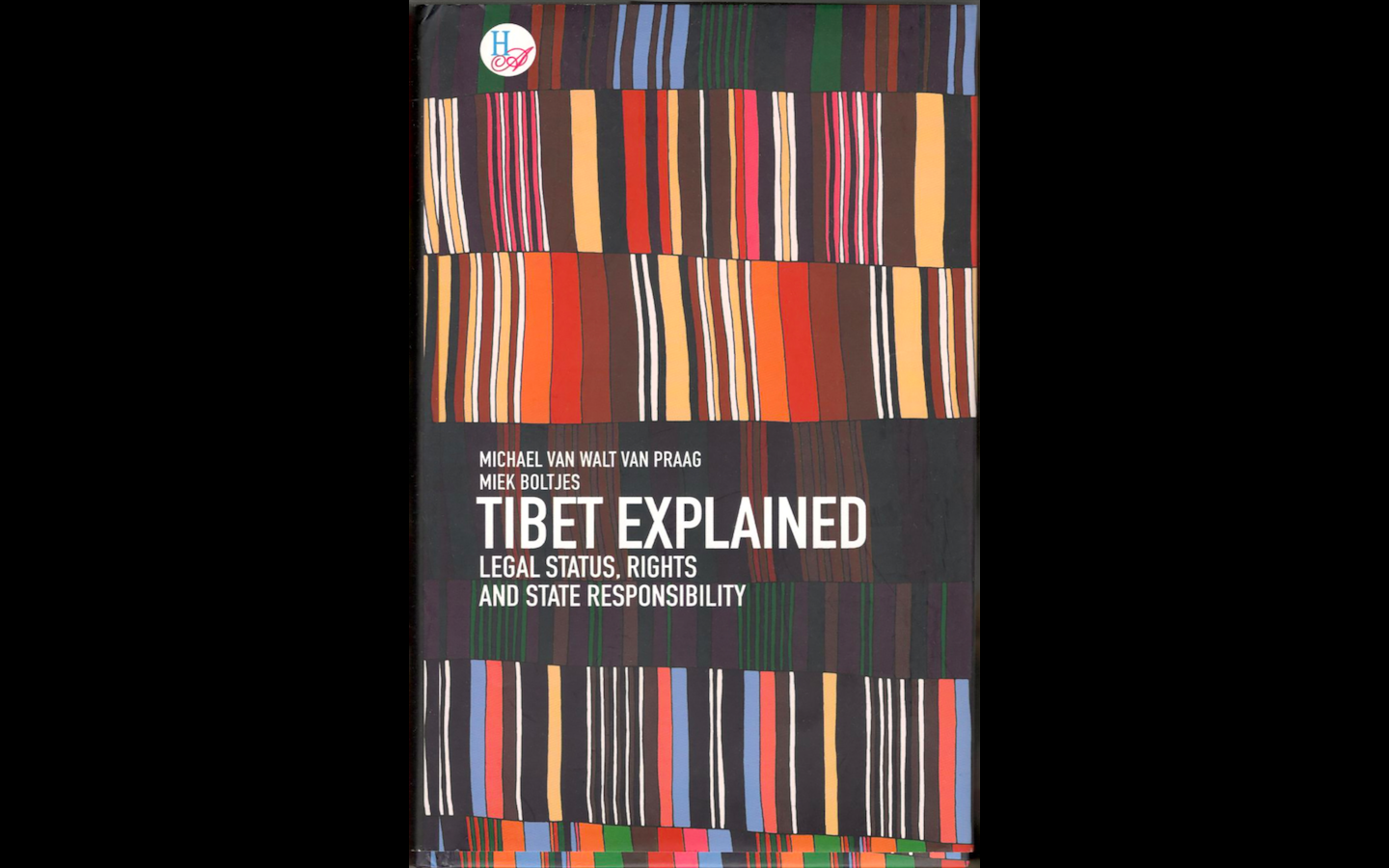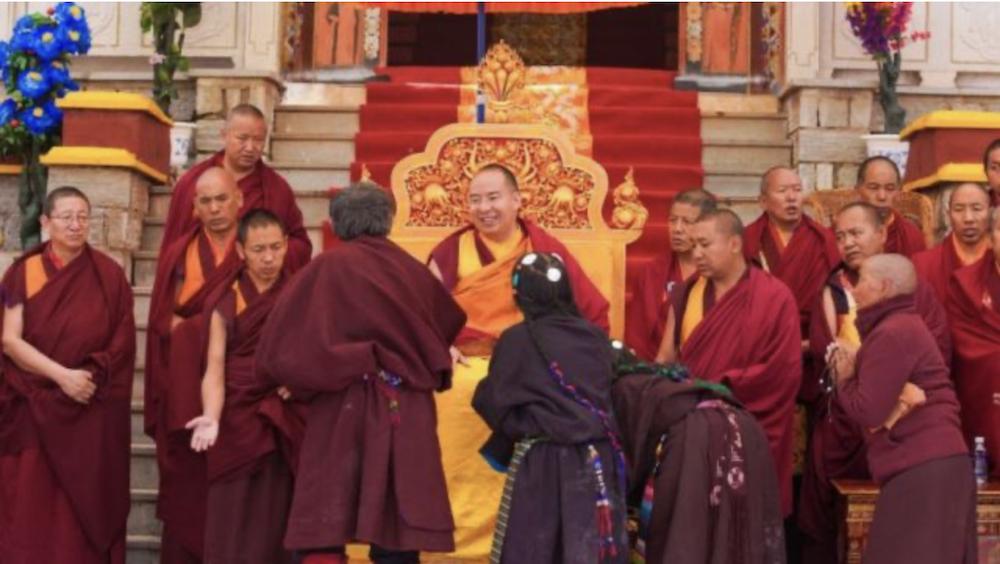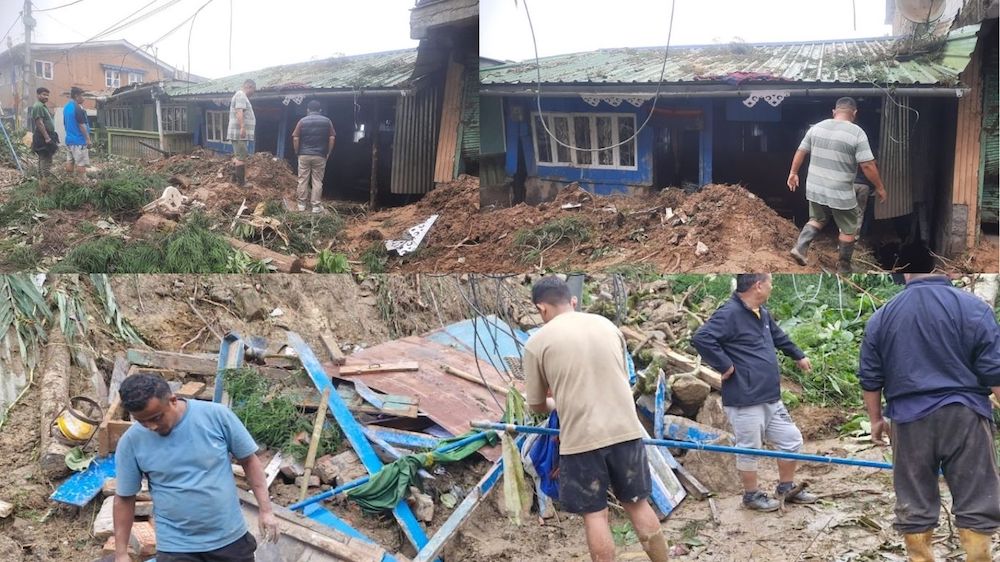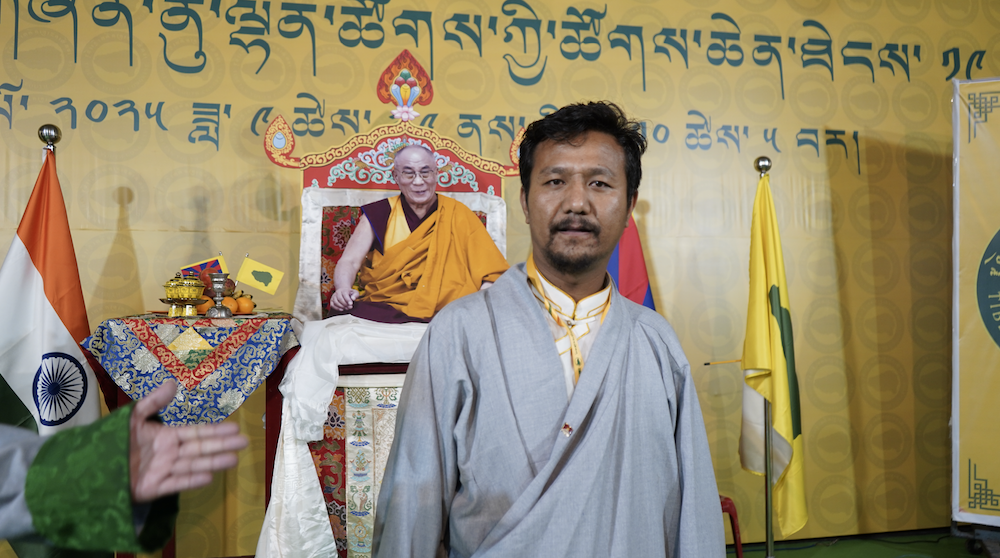Authors: Michael Van Walt Van Praag and Miek Boltjes
Publisher : Har-Anand Publications, New Delhi
Price : Rs. 1250
Pages : 319
‘Demolishing Chinese narratives on Tibet-Brick by Brick’
Challenging the Chinese art of manufacturing history of convenience, a book that convincingly exposes all those narratives which china is using as a weapon to make world accept its colonial occupation of Tibet, East Turkistan and South Mongolia as it ‘internal matters’
By Vijay Kranti
Since the communist People’s Republic of China (PRC) succeeded in replacing the ‘Republic of China’ (ROC) and emerging as the ‘real’ China in world forums like the United Nations, its aggression about its identity, rather than subsiding, has only increased. The world looks amused to watch that in addition to laying its claims over ROC-Taiwan it has expanded its claims about its ‘One China Policy’ about Taiwan also to its colonies like Tibet, East Turkistan (Ch. ‘Xinjiang’) and South Mongolia. These claims look illogical and funny in view of the fact that when Mao’s People’s Liberation Army (PLA) occupied these three countries (East Turkistan and S. Mongolia in 1949 and Tibet in 1951) in front of the eyes of the living generation of historians and international leaders, all of them were enjoying their status as independent and free countries.
To keep the world community at bay from challenging China against this occupation or from raising concerns about ever deteriorating human rights situation, the Beijing government has been presenting an aggressive set of narratives and historical claims. For example it claims that all of these three regions have been always ‘inalienable parts of China’ due to the ‘seamless transition’ from the Mongol and Manchu empires to modern day ROC of 1912 and hence to present day PRC. Another narrative about Tibet is that the so called ‘Seventeen-Point Agreement’ between the Beijing government and Dalai Lama’s representatives in 1951 in Beijing automatically transferred ‘sovereignty’ of Tibet to China. This, Beijing claims, rules out any right of Tibetan people to exercise any ‘right to self-determination’.
It is interesting to note that since China has acquired new economic, military and diplomatic mussels it has started imposing these claims and narratives as ‘Gospel Truths’ on the world community to dictate world governments, international bodies, international media and other opinion forums to follow its diktats about these three colonies the Chinese. China has not only declared every issue related to these countries as its ‘internal matter’ but also as its ‘core issues’ which none of them can even discuss openly. It wants everyone to refer to the Tibetans, Uyghurs and Mongols as ‘ethnic minorities’ of PRC and frowns upon any attempt to term any of them as a ‘country’. This Chinese aggression has now reached the levels that it has started dictating world governments and institutions to refer to Tibet as ‘Xizang’ —- a clear attempt to wipe away even the idea of ‘Tibet’ from international community’s mindscape.
In such a situation an interesting and a forceful book, which is based on almost ten years of research by two dedicated and committed researchers has come as a great relief to those who want to see history and related facts free from the Chinese coloured narratives. This research includes analysis and engagement with Chinese, Mongolian, Tibetan and Manchu historians, experts and non-Chinese historical sources. This book, titled “TIBET EXPLAINED — Legal Status, Rights and State Responsibility”, published by Har-Anand of New Delhi and written jointly by Michael Van Walt Van Praag and Miek Boltjes, is one of the most outstanding works of research on Tibet since it was occupied 74 years ago in 1951. Both of these authors are internationally acknowledged specialists in interstate conflict and international law. Michael is a renowned international law jurist who conducted a major part of this research during his tenure at the School of Historical Studies of the Institute for Advanced Study in Princeton.
In an international webinar on this subject, organized by this author, under the aegis of Centre for Himalayn Asia Studies and Engagement (CHASE), Michael had cautioned the world governments, diplomats, the academics and especially the international media to stop using certain terminology which the Chinese rulers have been trying to spread through a very systematic and refined propaganda. Giving examples he said that if you refer to the Tibetans, the Uyghurs and the Mongols as ‘ethnic minorities’ of China then it amounts to acceptance of Chinese claims that they are integral parts of a wider Chinese population. But the reality is that all of them are distinct ‘peoples’ and belong to three different nations, namely Tibet, East Turkistan and Mongolia which were ‘occupied’ by China in recent history. This precaution about using Chinese terminology and narratives blindly is important because in international law an ‘ethnic minority’ in a country may have some rights but they cannot claim full self-determination rights……” This book deals with all such Chinese narratives which Beijing uses to justify its forced occupation of these three countries which functioned as free nations before China colonized them.
What adds to the credibility of this book is that the authors organized long sittings and interactions with about 70 scholars and experts on East and Inner Asia who belonged to these regions and worked in Asia, North America and Europe. The result is that this book, divided into five sections and spread over thirteen chapters, offers meticulously researched and minutely discussed historical facts which challenge and expose every single false narrative of Chinese communist propaganda machine that is focused at claiming ownership of Tibet.
Part-1 of this book has three chapters which deal with PRC’s claim to Tibet, especially China’s narrative that ‘Tibet has always been a part of China’. While the first chapter explains why it matters whether Tibet was or was not historically part of China, the second one narrates why China makes such claims. According to the authors China’s claims over Tibet have serious impact on India’s sovereignty as China’s claims over its Arunachal Pradesh parts of Ladakh purely on the basis of claiming Tibet as a part of China.
Chapter three stands out as one of the most important and impressive part of this book as it logically and graphically exposes present day China’s real historic and legal status vis-à-vis Tibet or other colonies. Through a graphic chart the authors have visually exposed the hollowness of Chinese claims as it explains the historic time line of all dynasties which ruled over China for 1222 years from 690 AD till 1912 when the modern ‘Republic of China’ was declared and came into existence. In this chapter the authors have exposed present day PRC government’s claims over Tibet, East Turkistan and South Mongolia with clinical precision on the basis of expansive footprint of the Mongol and Manchu empires who ruled many other countries and region in addition to China. “This makes very clear why the PRC insists on superimposing the label ‘China’ on the Mongol and Manchu empires, as it is only these empires that exercised authority in large regions of Inner Asia, not only the Chinese Ming Empire.” In other words the present day communist Chinese rulers are laying their claims over Tibet, ‘Xinjiang’ and South Mongolia simply on the logic that since the Mongols and the Manchus ruled over China while the above mentioned regions were also under their influence; hence they belong to China of today. If such a Chinese logic is implied to other parts of the world then India can very well claim Australia as an ‘integral part of India’ or New Zeeland would also be entitled to claim India as its part simply because all three were ruled once by Britain.
In Part-2 the book’s focus is on assessment of PRC’s historical claim to Tibet. In its five chapters it analysis the historic relations of Tibet with the Mongol, Ming and Ching Empires. One of these chapters is dedicated to independent modern Tibet between 1912 and 1951.
In two chapters of Part-3 the authors have analyzed and demolished the idea that China’s military action against Tibet and the forced signing of the ’17-Point Agreement’ Dalai Lama’s delegation bestows China’s sovereignty over Tibet.
Through two detailed chapters on the question of Tibet’s right of self-determination in the Part-4 of this book the authors argue and prove that since Tibetans qualify to be ‘a people’ hence they have a right to the full exercise of self-determination under the prevailing international laws. All Chinese governments since occupation of Tibet in 1951 have been resisting similar international demands by claiming that Tibet is an ‘integral part of China’.
However, Part-5 appears to be the main highlight of this book as it deals with the international community’s policies and approach towards Tibet. Here the authors have reminded the international governments about their obligations under the international law which include asking them “not to recognize the PRC’s unlawful seizure and annexation of Tibet’; and to desist from rendering any aid or assistance to PRC government which helps it to maintain its unlawful occupation of Tibet.
But the most significant operative part of this chapter and the book is a list of nine policy recommendations by the authors to the world governments, institutions and media to stop using terminology and taking actions which end up promoting China’s false narratives on Tibet and other Chinese colonies. These points include: desisting from stating that “Tibet is a part of PRC”; refrain from stating that they oppose the idea of independence for Tibet; treat China-Tibet conflict as an international matter and not an ‘internal matter of China’; endorse Tibetan people’s right to self-determination; never use terms like ‘national minorities’ for Tibet, Uyghurs and Mongols because it reduces their identity to some minor Chinese ethnic groups whereas they have been independent ‘nations’ in recent history; and reject and contest PRC’s assertion that Tibet is a ‘core interest’ of China.
In short, his book is a mine of authentic information on history of China and its major colonies namely Tibet, East Turkistan and South Mongolia which is going to prove invaluable to all researchers, China experts, diplomats, media persons and activists. Especially to those who have been looking for authentic answer to the barrage of narratives which Chinese propaganda machinery has been spreading to confuse the world community. A massive appendix of 104 pages with endnotes, bibliography and index also provide additional information besides enhancing the authenticity of the authors’ research work.
(Views expressed are his own)
The author is a New Delhi based senior Indian journalist and well known Tibetologist. He can be contacted at v.kranti@gmail.com. Website & Blog : www.vijaykranti.com










